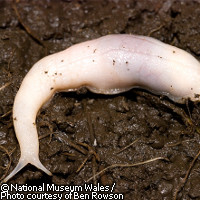World's top 10 new species
You're likely to have heard of the endangered species list and know that increasing numbers of animals and plants on Earth are threatened with extinction. But what about the new species list? An international committee of scientists responsible for species exploration and classification have released their choices for the planet's latest top 10 new species. Among them are the tiny (a seahorse the size of a pea), the long (an insect that measures almost 60 centimetres in length) and the old (a fossilised specimen of a live-bearing vertebrate). In 2007 alone, 18,516 new species were discovered worldwide, and were officially named and classified. In fact, since Carolus Linnaeus (the father of taxonomy) initiated the modern system of animal and plant classification 250 years ago, 1.8 million species have been formally documented in this way. Most scientists would suggest that the number of new species officially named and classified since the 18th century is 5 times that amount, closer to 10 million. A report ('State of Observed Species') and the top-10 new species list are released every year by Arizona State University's International Institute for Species Exploration in collaboration with the International Plant Names Index and the International Journal of Systematic and Evolutionary Microbiology. The report reveals that in 2007 (the most recent year of complete data), over 75% of the 18,516 new species described were invertebrate animals, followed by vascular plants (11.1%), while the remainder were vertebrates. A committee of experts is given the task of selecting the top 10 species. This year, the scientists were given the freedom to create their own criteria - anything from unique attributes to interesting facts and unusual names. Coming up with and announcing the list, explains Director of the International Institute for Species Exploration Quentin Wheeler, is about helping to draw attention in a fun way to biodiversity, taxonomy, and the importance of museums and botanical gardens. 'Charting the species of the world and their unique attributes are essential parts of understanding the history of life,' he said. 'It is in our own self-interest as we face the challenges of living on a rapidly changing planet. 'Most people do not realise just how incomplete our knowledge of Earth's species is, or the steady rate at which taxonomists are exploring that diversity. We are surrounded by such an exuberance of species diversity that we too often take it for granted,' added Professor Wheeler. Among this year's top 10 critics' picks are the seahorse known as Hippocampus satomiae, named after Miss Satomi Onishi who collected the specimens in Indonesia, and an extremely rare fossilised specimen of a fish giving birth some 380 million years ago (given the nickname 'Josie' in honour of the discoverer's mother). The list also includes what is possibly the world's smallest snake, found in Barbados and measuring just 104 millimetres, as well as the world's longest insect, Phobaeticus chani, from Malaysia. And the top 10 list offers more to wonder at: a snail whose shell twists around four axes; a giant palm that dies and collapses after flowering; the first-ever recording of caffeine-free coffee from central Africa; bacteria that live in hairspray, discovered by Japanese scientists; the ghost slug from Wales, Selenochlamys ysbryda; and a beautiful new species of damselfish.



